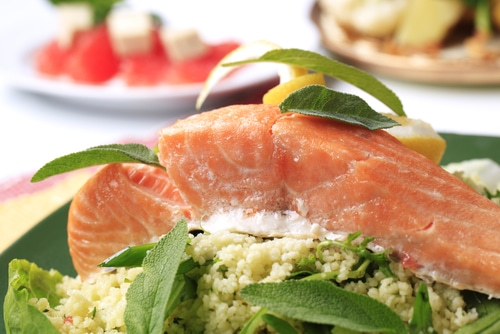
1) Cod liver oil:
Most people find the taste of cod liver oil offensive, but there are now flavored varieties that can help to make its consumption less unpleasant. Just one tablespoon of cod liver oil provides you with an amazing 340% of your recommended daily intake of vitamin D. In addition, cod liver oil is an excellent source of omega-4 fatty acids, which can reduce inflammation levels, help you to lose weight, and reduce your risk of developing type 2 diabetes.
2) Cow’s milk:
Drinking more milk is a very good way to increase your intake of vitamin D, as a single cup of milk provides you with around a quarter of your recommended daily intake. This is the case whether you prefer whole milk or some form of reduced-fat milk.
3) Salmon:
Like cod liver oil, all forms of salmon can boost your overall health due to the large amount of omega-3 fatty acids that they contain. However, if you specifically want to increase your consumption of vitamin D, it is vital to know that wild salmon contains the largest levels of vitamin D found in any natural food. Indeed, wild salmon contains over four times the amount that is present in farmed types of salmon.
4) Mushrooms:
White button mushrooms are particularly rich in vitamin D, and these extremely versatile vegetables can be added to salads, pizzas, burgers or pasta dishes. It is also worth noting that if you leave mushrooms in the sun after purchasing them, this will increase their vitamin D content. However, you should only do this for about half a day if you want to preserve their moisture and flavor.
5) Cereal:
Breakfast cereals are one of the best and most enjoyable dietary sources of vitamin D, and they are an especially good way to get younger children to increase their consumption of vitamin D. An average fortified breakfast cereal contains between 20% and 40% of your recommended daily intake. If you add a cup of milk to your cereal, you could be providing your body with as much as 65% of your vitamin D for the day.
6) Eggs:
Eggs are rich in protein, so they help to boost your energy levels. In addition, an average egg yolk contains around 5% of your recommended daily intake of vitamin D.
7) Shrimp:
85g of shrimp will provide you with more than a quarter of your recommended daily intake of vitamin D, and shrimp are also great sources of the aforementioned omega-3 fatty acids. However, if you suffer from high cholesterol levels then it is best to get most of your vitamin D from other sources.
8. Tuna:
Tuna is also a very good source of protein, and just 85g of this oily fish will provide you with 50% of an adult’s recommended daily intake of vitamin D.
9) Pork:
Three ounces of pork can provide you with around 20% of your recommended daily intake of vitamin D. However, the amount of vitamin D that you get from pork will vary depending on the way the meat is cut and prepared. You can get the most vitamin D from ribs, but will not get very much at all from slices of ham.
10) Sunlight:
Finally, it is, of course, important to remember that more than 80% of your recommended daily intake of vitamin D could come from the sun. Although sunscreen helps to prevent skin cancer and premature aging, it, unfortunately, prevents around 97% of your body’s possible vitamin D production. Luckily, experts say that if you are fair-skinned then you need only spend a half hour in the sun each day in order to get 100% of your recommended daily intake of vitamin D. If you are dark-skinned, then around two hours should be sufficient.

